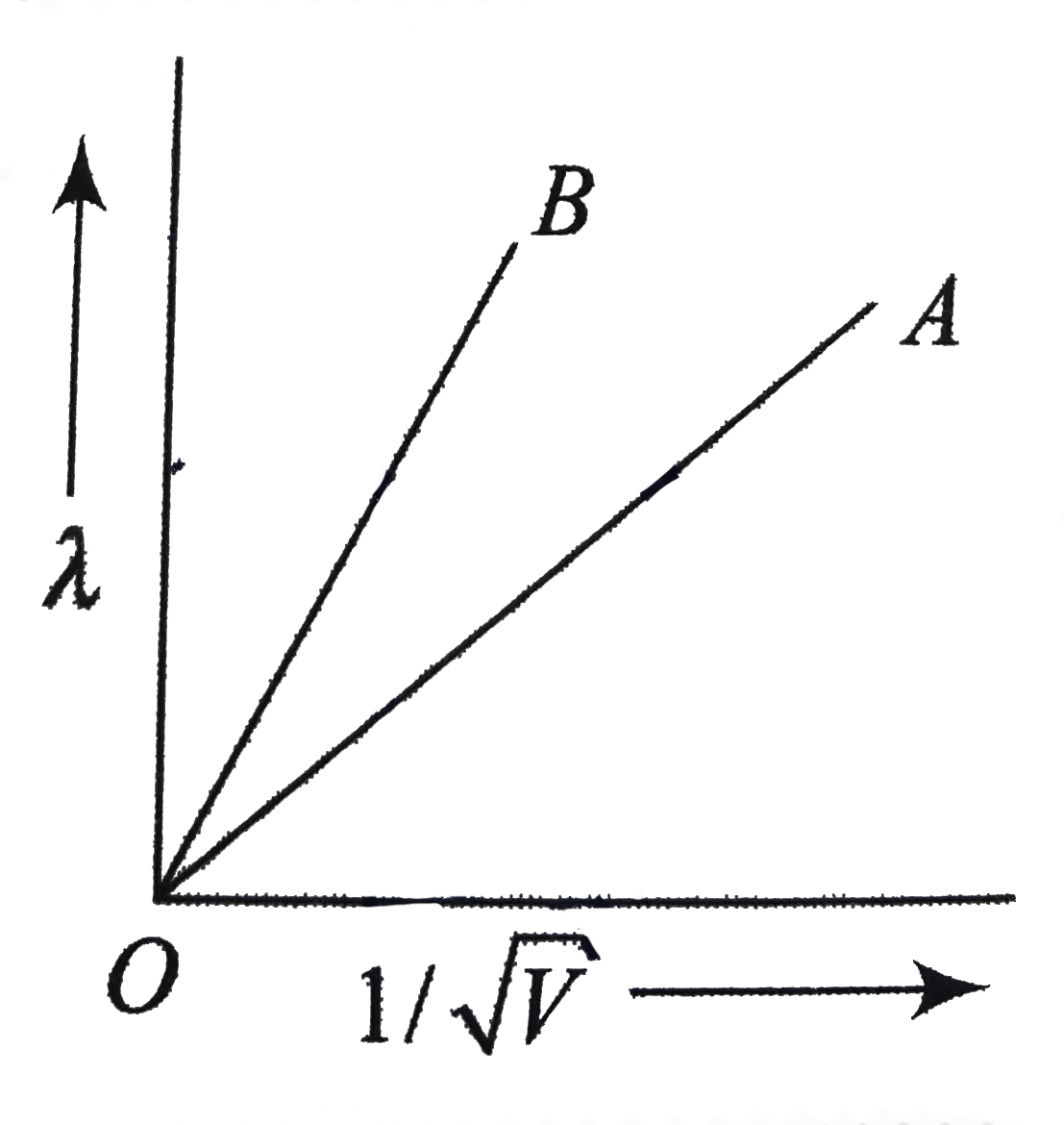Complete Solutions to LEVEL-II (H.W) of chapter DUAL NATURE of Class 12 book with complete answers and questions
| Class 12 | PHYSICS |
| Chapter | DUAL NATURE |
| NARAYANA | LEVEL-II (H.W) |
| Number Of Questions | 17 |
| Academic Year | 2023-24 |
When a metal surface is illuminated by a monochromatic light of wave-length `lambda`, then the potential difference required to stop the ejection of electrons is `3V`. When the same surface is illuminated by the light of wavelength `2lambda`, then the potential difference required to stop the ejection of electrons is `V`. Then for photoelectric effect, the threshold wavelength for the metal surface will be
View SolutionUltraviolet light of wavelength `800 A` and `700 A` when allowed to fall on hydrogen atoms in their ground states is found to liberate electrons with kinetic energies `1.8eV` and `4.0eV`, respectively. Find the value of Planck's constant.
View SolutionIn a photoelectric effect experiment, photons of energy `5eV` are incident on a metal surface They liberate photoelectron which are just stopped by an electrode at a potential of `-3.5V` with respect to the metal. The work fuction of the metal is
View SolutionThe number of photons emitted per second by a `62W` source of monochromatic light of wavelength `4800 A^(@)` is
View SolutionPhotons of frequencies `2.2xx10^(15) Hz` and `4.6xx10^(15) Hz` are incident on a metal surface. The corresponding stopping potentials were found to be `6.6V` and `16.5V` respectively. Given `e=1.6xx10^(-19) c`, the value of universal planck's constant is
View SolutionIf stopping potentials corresponding to wavelengths `4000A` and `4500A` are 1.3 V and 0.9 V, respectively, then the work function of the metal is
View SolutionIn a photoelectric experiment anode potential is ploted against plate current.

View SolutionAn electron moves with a speed of `sqrt3/2c`. Then its mass becomes…. Times its rest mass.
View SolutionPhotons of energy `2.0eV` fall on a metal plate and release photoelectrons with a maximum velocity `V`. By decreasing `lambda` and `25%` the maximum velocity of photoelectrons is doubled. The work function of the metal of the material plate in `eV` is nearly
View SolutionA proton when accelerated through a `p.d` of `V` volt has wavelength `lambda` associated with it. An electron to have the same `lambda` must be accelerated through a `p.d` of
View SolutionThe momentum of photon of electromagnetic radiation is `3.3xx10^(-29)kgms^-1`. What is the frequency and wavelength of the waves associated with it ? `h=6.6xx10^(-34)Js`.
View SolutionIf the energy of a particle is reduced to one fourth, then the percentage increase in its de Broglie wavelength will be
View SolutionThe de Broglie wavelength associated with an electron of velocity `0.3c` and rest mass `9.1xx10^(-31) kg` is
View Solution
The two lines A and B in fig. show the photo electron of de Broglie wavelength `(lamda)` as a function of `(1)/(sqrtV) `(V is the accelerating potential) for two particles having the same charge. Which of the two represents the particle of heavier mass?
View SolutionThe uncertainity in the position of a particle is equal to the de-Broglie wavelength. The uncertainity in its momentum will be
View SolutionIf the uncertainty in the position of proton is `6xx10^-8m`, then the minimum uncertainty in its speed is
View SolutionFrom Davisson-Germer experiment an `alpha` particle and a proton are accelerated through the same `pd V`. Find the ratio of the de Broglie wavelengths associated with them
View Solution
LEVEL-II (H.W) questions and complete solutions for chapter DUAL NATURE of NARAYANA PHYSICS (HINGLISH) of Class 12